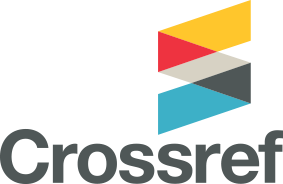BREAKING THE ICE WITH AI: CREATIVE WARM-UP ACTIVITIES FOR ENGLISH PHILOLOGY AND TRANSLATION STUDENTS
DOI:
https://doi.org/10.32782/apv/2025.4.28Keywords:
English language teaching, philology and translation students, communicative competence, creative activities, ice-breakers, artificial intelligence, motivation,cooperative learningAbstract
How a session begins often shapes the atmosphere for everything that follows. Students decide in those first minutes whether they are comfortable enough to speak, to take risks, and to collaborate. For learners in English Philology and Translation, these early exchanges are more than routine warm-ups: they are the first occasions to practise listening closely, expressing meaning precisely, and noticing cultural nuance, all of which are central to their future work. This article considers how artificial intelligence can be applied to such activities and how it changes the traditional idea of the ice-breaker. The discussion draws on communicative language teaching, theories of cooperative learning, and the affective filter hypothesis to explain why engagement at the start of class matters. Examples are then analysed to show what different AI tools can add. Language models allow the teacher to prepare prompts that bring out contrasts of register and meaning.Image generators offer visual material that is unpredictable and often invites intercultural comparison, prompting students to tell stories rather than give short answers. Synthetic voices provide access to accents and rhythms rarely available in the classroom, turning a short puzzle or announcement into practice for interpreting and subtitling. Used in this way, digital tools can revive familiar routines and connect them with professional competences. At the same time, the study underlines the teacher’s role in selecting and framing tasks. Without that guidance, automatically generated content may amuse but fail to teach. The conclusion is that AI-based ice-breakers can encourage participation and make interaction livelier, but their long-term value depends on context, access to technology, and responsible use. Further research is needed to see whether such activities build lasting confidence and communicative ability across a full course of study.
References
Дембіцька, С., Р. Яровий, & Я. Дук. (2024). Вплив ШІ-тьюторів на мотивацію та навчальну ефективність здобувачів. Педагогіка безпеки, 9(1), 43–49. https://doi.org/10.31649/2524-1079-2024-9-1-043-049
Godwin-Jones, R. (2024). Distributed agency in language learning and teaching through generative AI. Language Learning & Technology, 28(2), 5–30. https://doi.org/10.64152/10125/73570
Johnson, D. W., Johnson, R. T., & Smith, K. A. (2014). Cooperative learning: Improving university instruction by basing practice on validated theory. Journal on Excellence in College Teaching, 25(3–4), 85–118.
Krashen, S. D. (1982). Principles and practice in second language acquisition. Oxford: Pergamon.
Lightbown, P. M., & Spada, N. (2021). How languages are learned (5th ed.). Oxford: Oxford University Press.
Mariienko M., Nosenko Yu., & Shyshkina M. (2020). Personalization of learning using adaptive technologies and augmented reality. CEUR Workshop Proceedings, 2731, 341–356.
Nunan, D. (2015). Teaching English to speakers of other languages: An introduction. London: Routledge.
Pack, A., & Maloney, J. (2023). Potential affordances of generative AI in language education: Demonstrations and an evaluative framework. Teaching English with Technology, 23(2), 4–24. https://doi.org/10.56297/BUKA4060/VRRO1747
Richards, J. C., & Rodgers, T. S. (2014). Approaches and methods in language teaching (3rd ed.). Cambridge: Cambridge University Press.
Savignon, S. J. (1997). Communicative competence: Theory and classroom practice. Texts and contexts in second language learning (2nd ed.). New York: McGraw-Hill.
Tsapro, H. (2025). Teachers’ ChatGPT vs students’ ChatGPT: A classroom battle of wits. In I. Malyshivska, O. Bilyk, & N. Pylyachyk (Eds.), Зростаємо разом – викладання з вірою та стійкістю: матеріали 27-ї міжнародної науково-практичної конференції (pp. 221–223). Ivano-Frankivsk.
Tsapro, H., & Gryshchenko, O. (2024). Teaching lexically with AI: Merits and pitfalls. In L. Hnapovska, O. Ilienko, M. Tsehelska, & L. Kuznetsova (Eds.), Навчання англійської мови у воєнний час: розмаїття голосів стійкості та співчуття: матеріали міжнародної науково-практичної конференції (pp. 101–102). Lviv: PP “Marusych.”
Zawacki-Richter, O., Marín, V. I., Bond, M., & Gouverneur, F. (2019). Systematic review of research on artificial intelligence applications in higher education – where are the educators? International Journal of Educational Technology in Higher Education, 16, 39. https://doi.org/10.1186/s41239-019-0171-0








